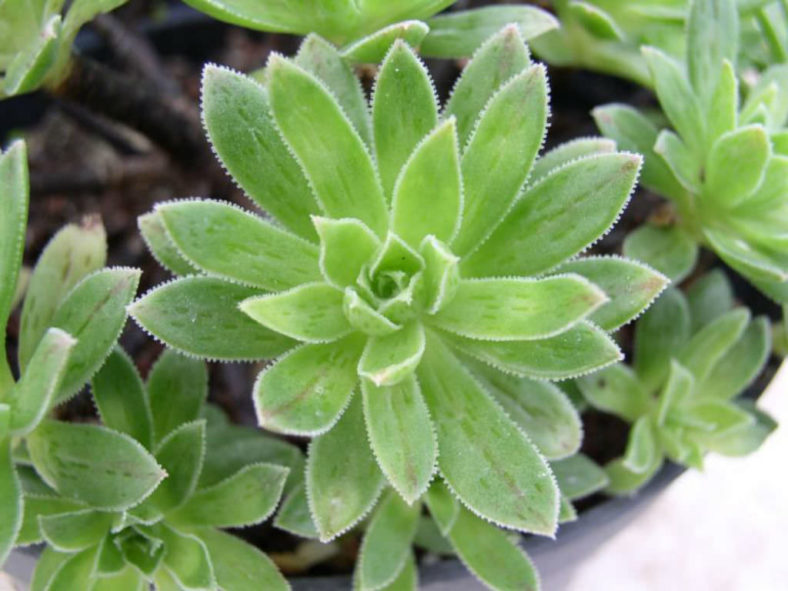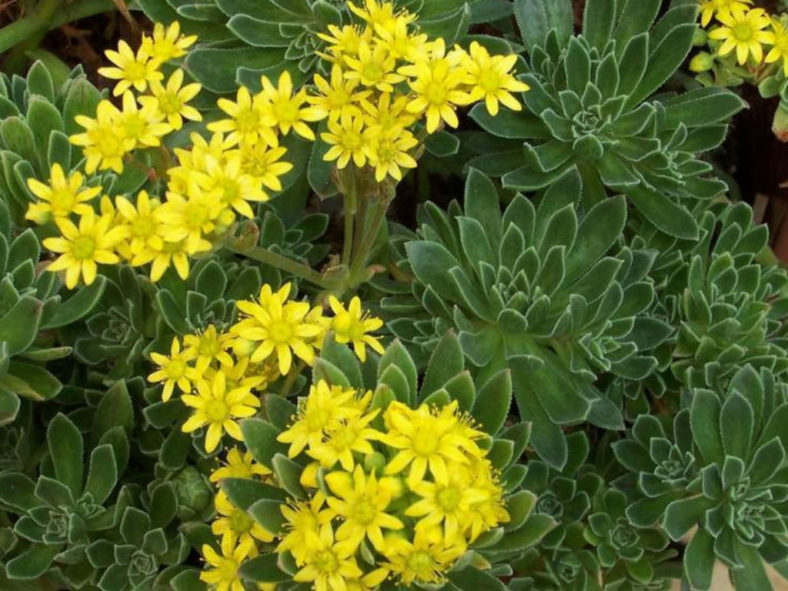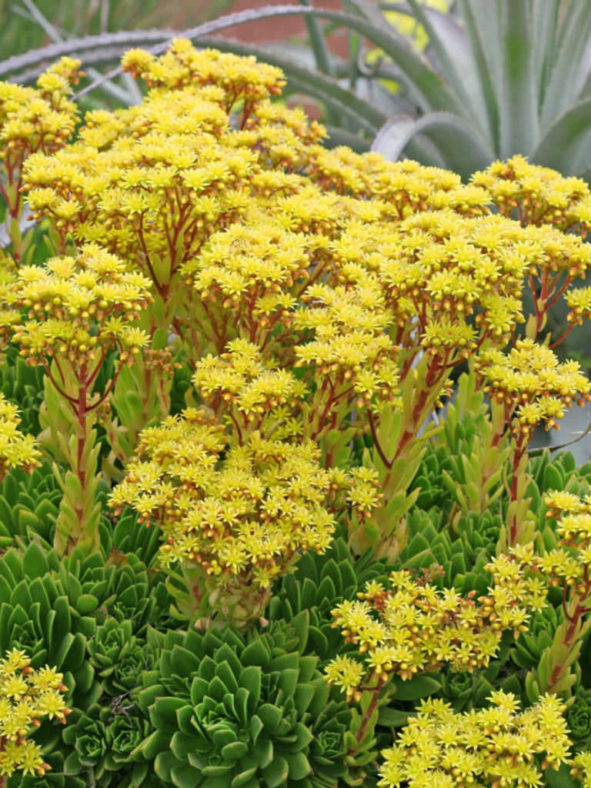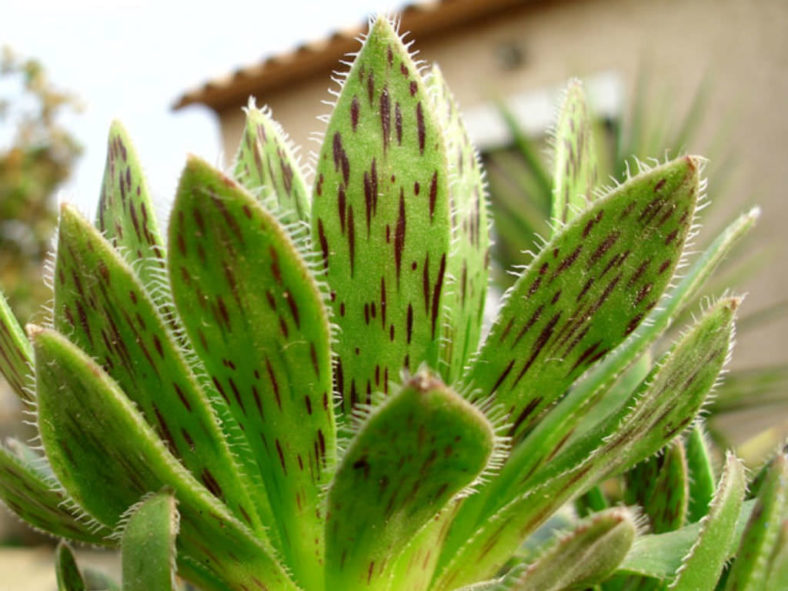Scientific Name
Aeonium simsii (Sweet) Stearn
Synonym(s)
Sempervivum poculiforme, Sempervivum simsii
Scientific Classification
Family: Crassulaceae
Subfamily: Sempervivoideae
Tribe: Aeonieae
Genus: Aeonium
Etymology
The specific epithet "simsii" (pronounced "SIM-see-eye") honors John Sims (1749-1831), an English physician and botanist.
Origin
Aeonium simsii is native to the Canary Islands. It occurs on Gran Canaria at rocky sites at elevations ranging from 1,640 to 6,230 feet (500 to 1,900 m).
Description
Aeonium simsii is a well-branched succulent that forms dense clumps of short, stout branches that end in cup-shaped rosettes of yellowish-green leaves with longitudinal, brownish stripes on the lower surface. It can grow up to 12 inches (30 cm) tall, while the rosettes can reach a diameter of 4.8 inches (12 cm). The leaves are thick, fleshy, lance-shaped, with conical cilia along the margins, measuring up to 2.4 inches (6 cm) long and 0.8 inches (2 cm) wide. They may sometimes have a purplish-brown line down the middle of the upper surface.
The flowers are yellow, star-shaped, and 7- to 9-merous. They appear in spring in flat-topped (or nearly so) clusters on densely leafy stalks that can grow up to 12 inches (30 cm) tall.

Hybrids of Aeonium simsii
How to Grow and Care for Aeonium simsii
Hardiness: USDA hardiness zones 10a to 11b: from 30°F (-1.1°C) to 50°F (10°C).
Aeoniums do not like hot or dry weather. They may go dormant in summer and do not require any water except in arid conditions. In extreme heat, their leaves will curl to prevent excessive water loss. Growing them in moist shade will keep them growing, but their true growth season is winter to spring when temperatures are cool (65–75˚F / 18–24˚C) and damp. In the winter, water whenever the soil has dried out. Test by poking your finger down into the soil an inch or two. Too much moisture or leaving them in wet soil will cause root rot. A sandy loam or regular potting mix is better than a mix specifically designed for cacti and succulents, since Aeoniums need some moisture.
See more at How to Grow and Care for Aeonium.
Propagate Aeoniums by stem cuttings, except for unbranched species, which die after flowering and are propagated from seed. Take cuttings when the plant is actively growing, usually in the fall in USDA Plant Hardiness Zones 9 through 11. Aeoniums go dormant in summer; cuttings taken while plants are dormant do not root. Each leaf rosette dies after it blooms.
See more at How to Propagate Aeonium.
Links
- Back to genus Aeonium
- Succupedia: Browse succulents by Scientific Name, Common Name, Genus, Family, USDA Hardiness Zone, Origin, or cacti by Genus
Photo Gallery
Click on a photo to see a larger version.


